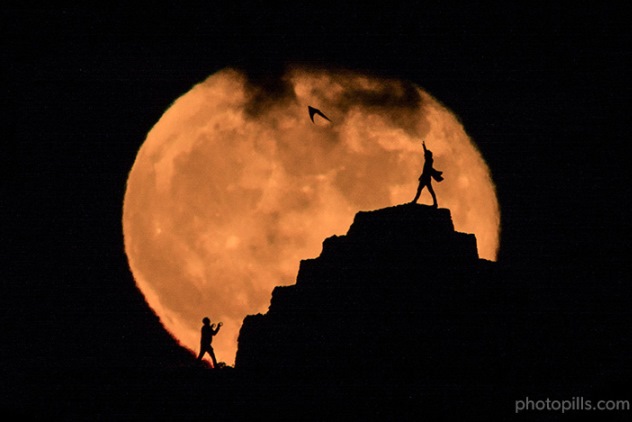Photographers worldwide are eagerly waiting for tomorrow when the full supermoon phenomenon will take place. It will be the biggest supermoon in 68 years and the full moon won’t come this close to Earth again until 25 November 2034.
The full supermoon is a rare astronomical occurrence, taking place every one to two years when the full moon coincides with its closest point to Earth during its 27-day lunar orbit. As the moon rotates in its elliptical orbit around the Earth, there are two points that astronomers marked with names: “lunar perigee”, which is the point of the closest distance of the moon to our planet at 363,104 kilometers, and “lunar apogee”, which is the point of the farthest distance of the moon from our planet at 405,696 kilometers. So when lunar perigee coincides with a new moon, which normally happens several times a year, the “Supermoon” can appear up to 15% larger and 30% brighter compared to a full moon at lunar apogee.
The supermoon is going to be visible in our night sky tomorrow and it’s going to be one of the biggest and brightest lunar events of the 21st century. So watch out for it tomorrow!
I am very poor at night photography and with the limitations of my photographic gear, I know I will be lucky if I can get some decent images of the supermoon on my camera. But what the heck! I just wanna witness this phenomenon and try to capture the moon in its full glory.
For those serious photographers, you can get great tips for photographing the supermoon at these links:
http://www.nationalgeographic.com/photography/proof/2016/11/how-to-photograph-supermoon-astronomy/
http://www.space.com/34710-how-to-photograph-the-supermoon-nasa-pro-shares-his-tips.html
http://www.photopills.com/articles/7-tips-make-next-supermoon-shine-your-photos
http://www.mirror.co.uk/science/supermoon-november-2016-photograph-century-9194527
http://home.bt.com/tech-gadgets/tips-how-to-photography-the-supermoon-11364112136198
Have fun!
 CY@CY Says Welcome to my dreamscape. Where a Lim is also a Ling.
CY@CY Says Welcome to my dreamscape. Where a Lim is also a Ling.
